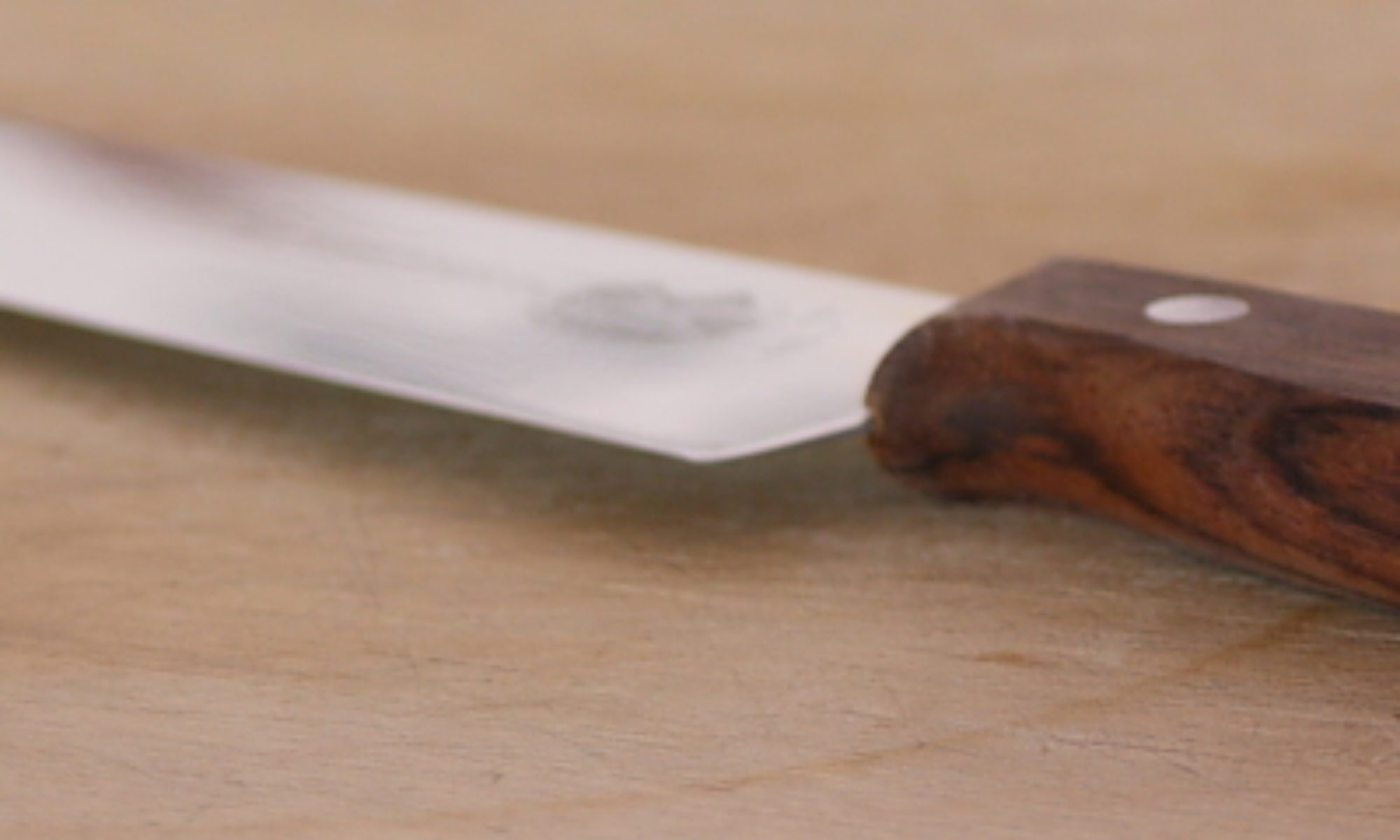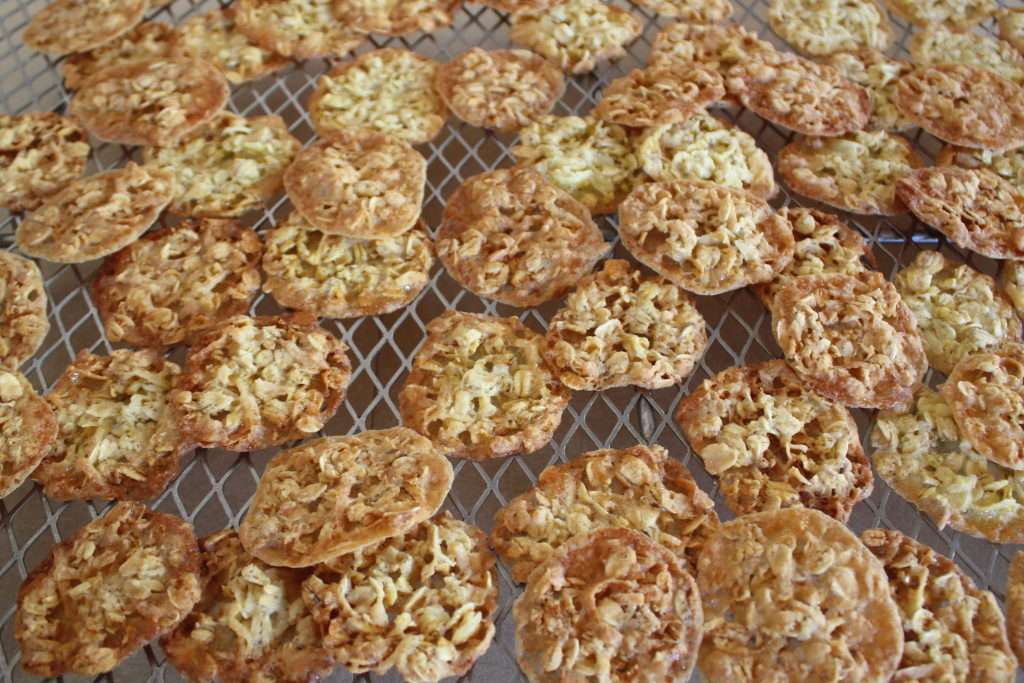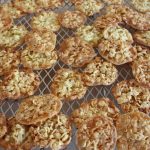
Even if you own The Joy of Cooking, by Irma S. Rombauer and Marion Rombauer Becker, which is where today’s recipe originates, you’ll be thanking us profusely for testing it out and giving you critical tips for making your life (or at least the part of your life that involves making these cookies) so much better.
But, before we get to making your life better, we’ll point out that we selected these cookies based on flourless in the title, and that they made a lot. Occasionally, when we make things for others (such as these, which were for a coffee/social hour), we consider that some people are avoiding certain ingredients, and it’s nice to try to include them in the fun, too.
Flourless Oatmeal Lace Wafers
Ingredients
- 3 large eggs
- 2 cups sugar
- 3/4 tsp vanilla extract
- 1 tsp salt
- 2 Tbs melted butter
- 1 cup shredded coconut
- 2 cups old-fashioned rolled oats
Instructions
- Preheat oven to 350°F. Line baking sheets with silicone baking mats (preferred) or parchment.
- In a large bowl, whisk together eggs, sugar, vanilla, and salt.
- While whisking, slowly add butter and continue whisking until completely incorporated.
- Stir in coconut and oats.
- Drop dough onto prepared baking sheets by half-teaspoonfuls, leaving at least an inch of space between each small mound of dough.
- Bake for 10-12 minutes, or until lightly browned.
- Remove lining from baking sheets and allow cookies to cool completely before removing.
Ingredient discussion:
Okay, we can’t state this strongly enough, even though it’s not about the ingredients. You need to line your baking sheets with either silicone baking mats (choice #1) or baking parchment (choice #2). The original recipe said to use aluminum foil, but, unless you want to have a miserable time trying to pull these cookies away from the foil, breaking most of them in the process, you absolutely, positively, do not want to use foil. See, your life will now be better. Other than that, as always, we recommend real eggs, from hens that are allowed to be hens (i.e., peck, scratch, and run around in the sun), 100% real vanilla, and unsalted butter, since you can figure out how to salt your own food.
Procedure in detail:
Preheat oven to 350°F. Line baking sheets with silicone baking mats (preferred) or baking parchment. Accept no substitutes for either of the products (re-read above if in doubt).
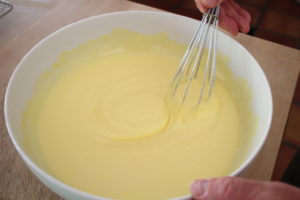
Whisk eggs and sugar. In a large bowl, whisk the eggs to break them up, and, while whisking, pour in the sugar and continue until the mixture is pale yellow, about a minute or two. Whisk in the vanilla extract and salt.
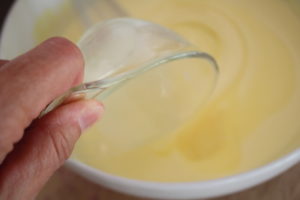
Whisk in butter. Again with the whisk, slowly add the butter as you whisk the batter. It’ll take a bit of whisking to get it all mixed in. Not a lot of effort — it’s not as if you’ll be whisking for more than two minutes.
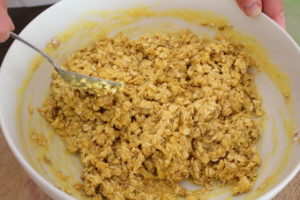
Add coconut and oats. Switch to a spoon and simply stir in the coconut and oats, and the cookie dough is ready.
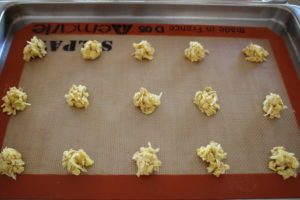
Portion and bake. You’re really making a type of tuile, a thin, crispy cookie that will spread a lot in the oven, so use a small spoon — we used demitasse spoons — to scoop about 1/2 a teaspoon of dough and place it on those prepared cookie sheets. Leave at least an inch of space between each scoop. Bake for 10-12 minutes, or until the cookies have spread into flat disks, and turned a golden brown in the center with slightly darker edges.
Cool. Once baked, carefully lift the liners (silicone baking mats are hot!) with the cookies off the pan to stop any residual heat from continuing to bake the cookies, and let cool completely. Once cool, carefully pull the cookies away from the liner and transfer to a cooling rack.
These are tasty. Really tasty. Crispy, with a slight caramel taste, and, with the oats, you can pretend they’re good for you, too. Or, at least, that’s what we told ourselves when we tested the broken ones (we tried the foil, as the original recipe recommended). An excellent cookie, light enough that you can eat several. Five stars.
